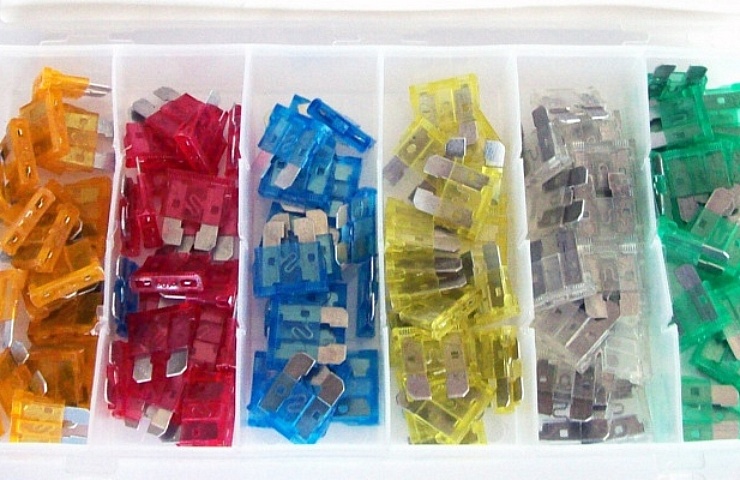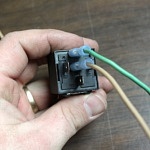Contents
Every gearhead has experienced the frustration of an electrical car part that stops working. The first thing to check is if you blew a fuse. ,With a little knowledge of car fuse types and a few simple tools, you can locate a bad fuse and replace it yourself.
We’ll explain how it works. As a bonus, we’ll provide guidance about how to add a circuit to provide more electrical power to your vehicle.
Shop automotive fuses nowVehicle Electricity 101
First, let’s review the basics of vehicle electricity. To properly (and safely) service any electrical system, it’s smart to know the basics. If this is old hat to you, move on to the next section.
Here are the critical terms:
- Voltage = Almost the same as water pressure
- Current = Almost the same as water flow rate (the volume of water)
Power is the product of voltage multiplied by current (measured in amps). This equation is Ohm’s Law.
A wired circuit is the way the electricity makes a round trip. The electricity leaves the battery and goes through the component (such as a light or radio). Then it returns to the battery to complete the circuit.
It takes a lot of wire to reroute the electricity from each device back to the battery. Instead, carmakers “ground” the device to the chassis, which also serves as the battery’s negative post. That’s how devices throughout the car complete the circuit and are grounded for safe operations.
Without a ground, the circuit would not be complete and you would have no power.
The Role of Automotive Fuses
In a perfect world, your car’s electrical system would never fail. But of course, wiring and the electrical components can break down. For example, an electrical device could break and thereby create a “short” in the circuit. The system could also fail when insulation no longer protects the wiring.
When there is a break in the circuit, more amps start to flow. The wiring can’t handle that spike in power. As a result, wires can overheat, melting the insulation. In a worst-case scenario, electric devices can be damaged or cause a fire.
The vehicle’s fuses prevent these bad things from happening. A fuse is a device with a thin so-called sacrificial wire. When excess amperage goes through the circuit, the wire breaks. After that fused wire breaks (or melts), the electricity can no longer flow through the circuit to cause damage.
It’s a bummer when an electrical component stops working. But the good news is that fuse did its job. It prevented worse damage to the device or the vehicle’s wiring.
Fuse Boxes
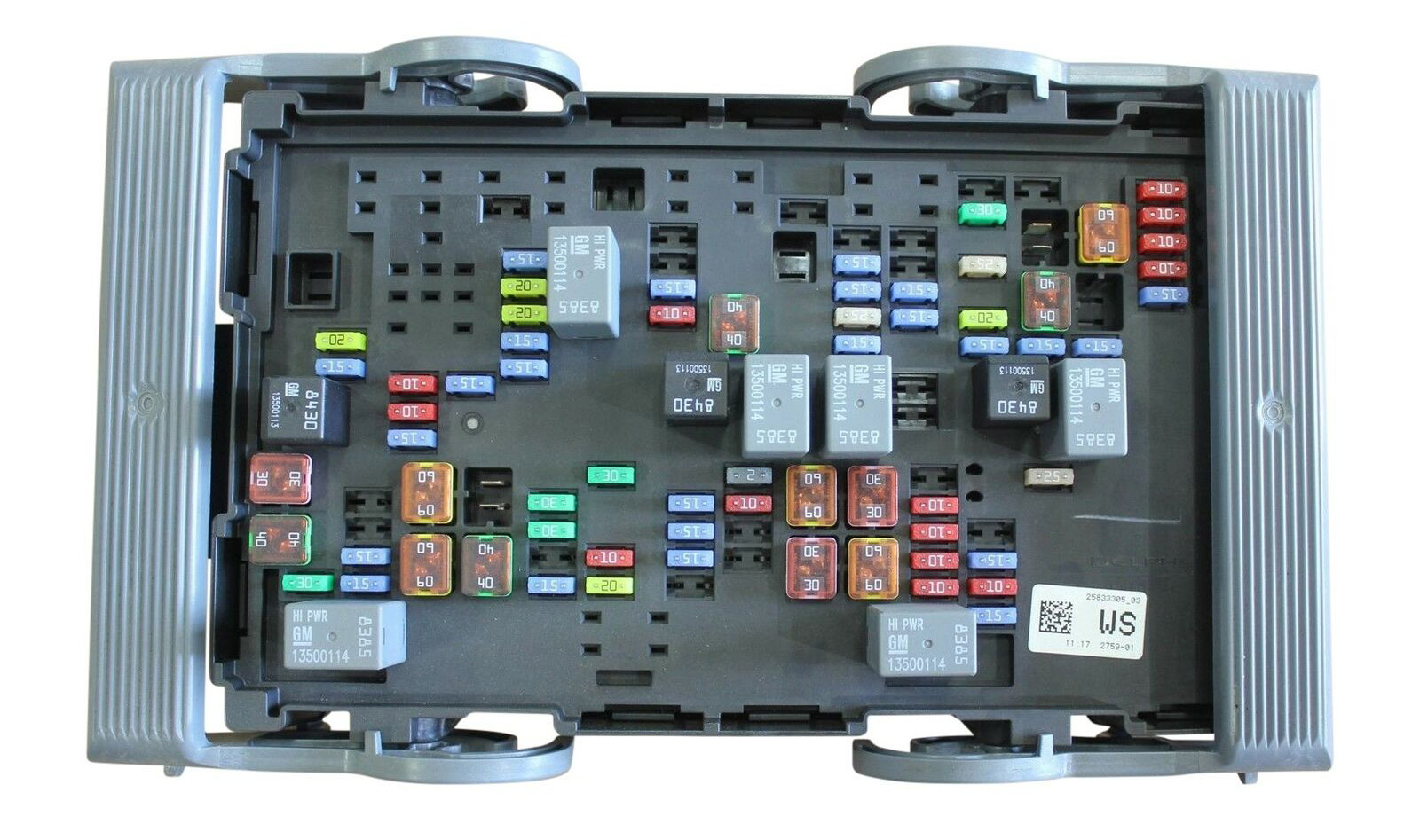
The typical fuse box is designed to make inspecting and replacing fuses as easy as possible.
Cars organize the location of fuses via fuse boxes. Modern cars usually have one under the hood in the engine compartment and another in the passenger compartment under the dashboard.
Every carmaker places the fuse box in a different location. Cadillacs usually hide the fuse box under the rear seat. BMWs and Mercedes Benz vehicles position them in the trunk.
When in doubt about where to find your vehicle’s fuse box, check the owner’s manual.
Most modern vehicles use decals in the fuse box indicating the designated circuit for each fuse. It might label a fuse slot as “AC 30” or “Power Windows 15.” The owner’s manual will also provide this information. Fuse boxes also usually include a plastic tool, like a tweezer, to remove and replace fuses.
Car Fuse Types
Electrical system technology has changed a good bit over the years. Car fuse types vary by vintage and country of origin.
Automotive Fuse Types: Blade Fuses
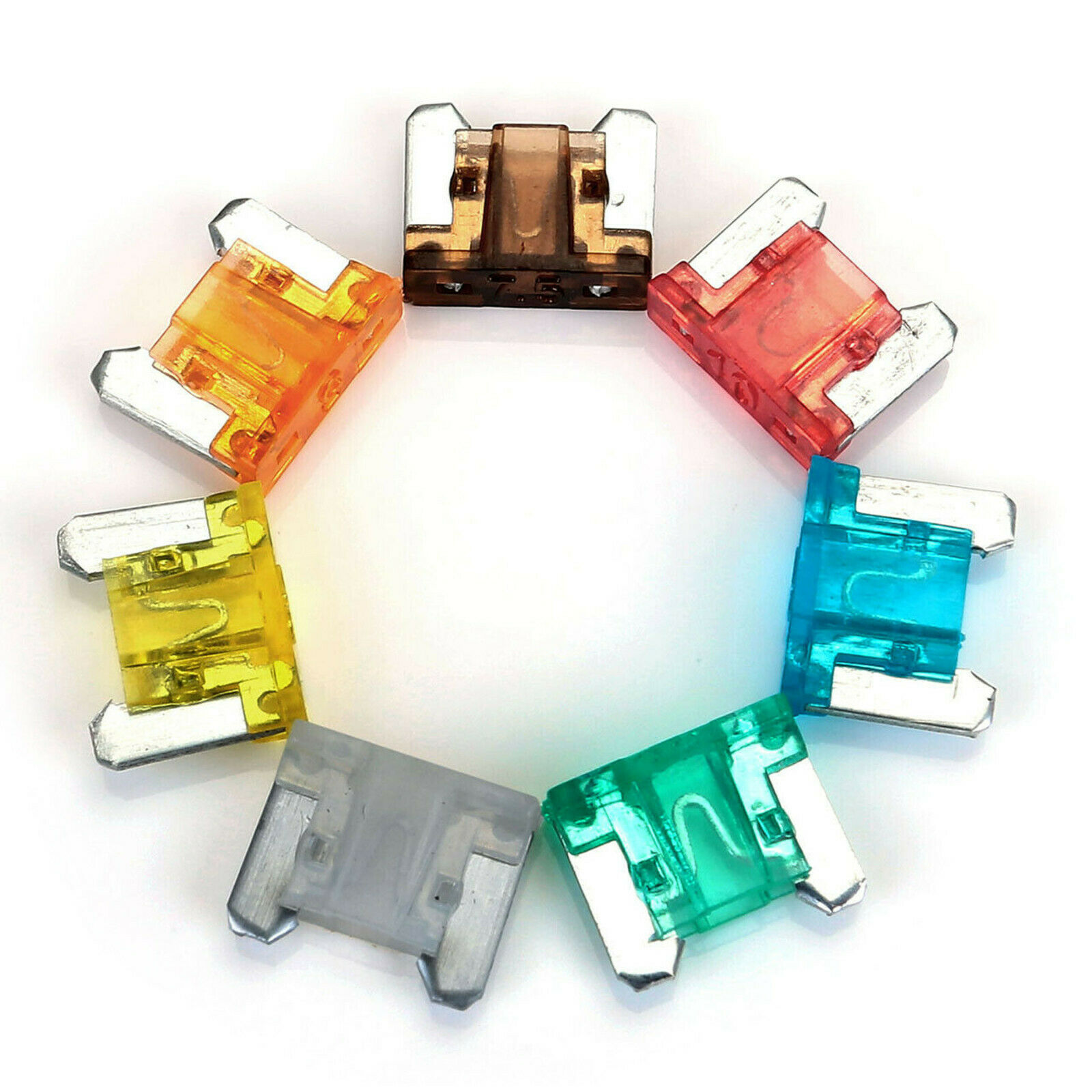
The color of the blade fuse indicates the amperage rating.
Blade fuses are the most common of all car fuse types for modern vehicles. A plastic translucent blade fuse looks like the letter C. The two metal prongs have a metal strip connecting the two prongs. The color-coded handle on top holds the recessed prongs. It provides a grip for inserting and removing the fuse from the fuse box.
If too much amperage flows through the fuse, the thin, delicate metal in the middle will burn or break. That’s what stops the flow of electricity.
The color of the blade fuse indicates the most amperage. The rating for amperage is also stamped on top of the fuse.
Blade fuses come in six different styles and sizes. They all have the same basic design, although the names might change according to the manufacturer. It’s very important to replace an old, burnt fuse with a new one using the same amperage and design.
Automotive Fuse Types: SFE Fuses
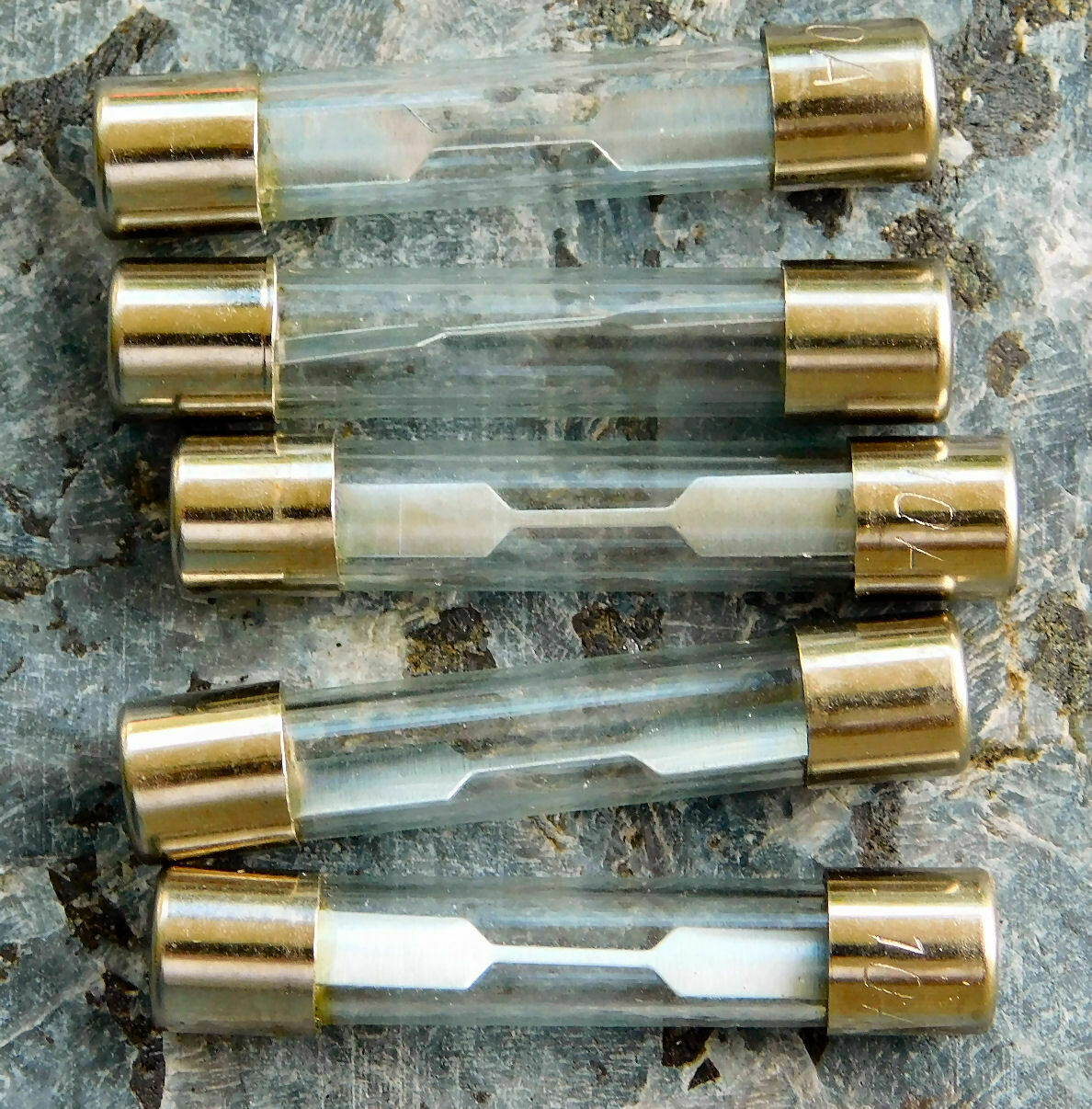
Many older American cars used SFE glass fuses.
Relatively older cars will have a different style of a fuse. For example, vehicles made in the 1980s use fuses featuring a glass tube with two metal ends. They are referred to as SFE (Society of Fuse Engineers) fuses.
The amperage rating represented by the SFE rating is stamped on the end cap. A thin wire is soldered between the two metal caps inside the glass tube. That’s the wire that will break or loosen from the solder when too much amperage flows through the circuit.
Rather than a color code, the manufacturers use different lengths for each amperage rating. That prevents a user from using the wrong size fuse as a replacement.
The problem with SFE fuses is that the wire sometimes breaks near the metal cap, which prevents a visual check for continuity. The stamped amperage rating can also become hard to read. Sometimes, the entire glass tube breaks.
Automotive Fuse Types: AG Fuses
A similar fuse is produced with an AG (American Glass or All Glass) rating. Some AG fuses are good for cars, but many are made for non-automotive applications.
These AG fuses also vary by length. Yet, each size can accommodate different amperage ratings. This increases the risk of using the wrong fuse for a specific electrical application. It’s critical to double-check that an SFE fuse has the correct amperage rating for the intended use.
A fuse with the wrong rating will not fit in the fuse slot.
Automotive Fuse Types: MDL, Torpedo and Lucas Fuses
SFE and AG glass fuses are considered “fast blow” fuses. The moment that the amperage exceeds the rating, they blow.
A different version of the fuse is called MDL. They look very similar but are “slow blow” fuses. MDL fuses are designed to absorb a short burst of excess amperage and only blow when a sustained load is present. They are often used in devices like air conditioners and fans with a temporary high surge of electrical current.
This piece of advice deserves repeating: Make sure that you get the correct matching glass fuse to replace the one that has blown.
There are still other car fuse types based on the make and age of your car. But they all function in the same basic manner. One style of fuse that you might find on other vehicles, especially foreign, is the GBC fuse. It’s commonly called a torpedo, barrel, or continental fuse. It looks like a plastic tab with metal at each end.

European cars typically used these GBC or torpedo fuses.
You might also encounter Lucas fuses, which were used in British cars. They were ceramic or glass styled with cone-shaped ends. The Lucas fuse ratings were printed on a slip of paper inside the glass tube. That writing on that piece of paper fades over time, making it hard to read.

A basic multimeter will allow to test fuses.
Checking Car Fuses
To check fuses, you will need a multimeter and a fuse puller.
- Use a fuse puller to remove the fuse. Pull straight up or out to avoid bending the contacts or fuse prongs.
- On the multimeter, change the setting to “Continuity.”
- Place the fuse on a piece of wood or other non-metallic surfaces.
- If you are checking a blade fuse, place one multimeter probe on one side of the metal prong and the other probe on the other metal prong.
- If checking a glass tube fuse, place the probes on each of the metal caps. A glass fuse doesn’t have prongs.
- If the meter shows you have continuity, the fuse is still connected and good. If the continuity is broken, then you know the fuse is bad.
If the fuse is still good, then check the wiring for the affected component that’s no longer working. Look around for any broken or disconnected wiring, or chaffed insulation.
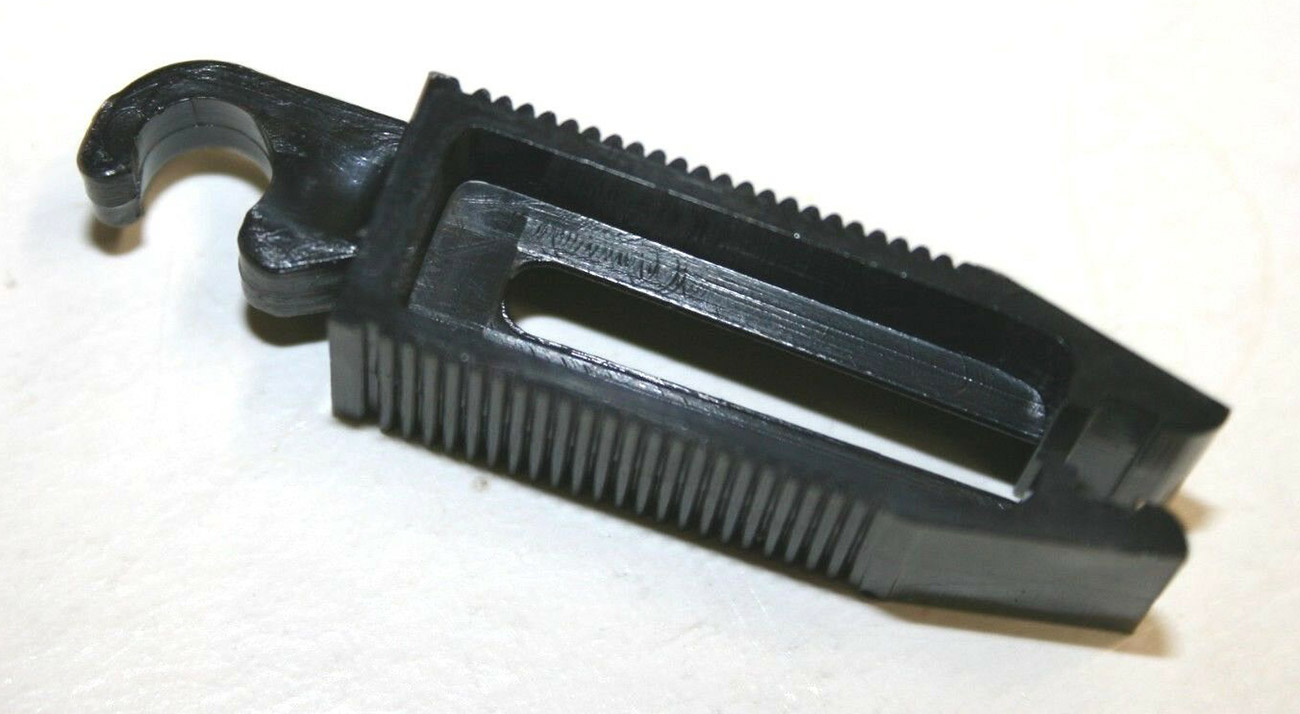
This fuse puller can pull a SFE glass tube with the hook (left). Or a blade fuse can be removed with the tweezer end (right).
If the fuse is still good, then check the wiring for the affected component that’s no longer working. Look around for any broken or disconnected wiring, or chaffed insulation.
Replacing Car Fuses
If you don’t discover an obvious issue, try replacing the fuse. We’ll provide tips on replacing the fuse in a moment. But, if you replace the fuse and it promptly blows, then don’t replace it a second time.
It’s a bad idea to keep replacing the fuses. It would be best if you found the underlying reason why the fuse is blowing. If that happens, you might need professional help to explore why the electrical power is failing.
Follow these steps to replace the fuse:
- Turn off the car.
- If a dome light or headlight comes on, even when the ignition is off, then you should disconnect the battery.
- Confirm that all circuits are off by trying to turn on a device that you know is working. (If you replace a fuse when there is power to the circuit, there’s a risk of immediately blowing a fuse or damaging one of the car’s electrical devices.)
- For a blade fuse, push the blade fuse down firmly into the fuse box.
- For a glass fuse, align the tube against the metal contacts and firmly push in. Ideally, use the plastic fuse holder. Do not use any metallic tools to move the glass fuse to avoid striking the metallic contacts.
CAUTION: Under no circumstance should you increase the fuse amperage rating to fix the issue. The manufacturer has designed the system to strictly use a specific amperage.
If you increase the fuse rating size, more amps will flow and possibly damage the component and even cause an electrical fire.
Adding a Circuit
Sooner or later, you will want to add a new power source for a device. Here are three ways to safely add a power source to your circuit. Always make sure you are adding enough amperage to meet a device’s maximum needs.
Use an Available Open Circuit
Many modern cars have prewired the fuse box for later expansion, especially if your vehicle didn’t come with all the available trim options.
If your car has a free circuit, it will work if the listed amperage matches your need. The circuit rating should be indicated on the fuse box or in the owner’s manual.
Add a Tap-A-Fuse Adapter
The second option is to use a Tap-a-Fuse or Add-On adapter. Follow these steps:
- Disconnect the battery.
- Remove the fuse that you wish to copy or (tap).
- Insert the “Tap a Fuse” into the same slot.
- Place the original fuse into one of the two slots in the top of the Tap-a-Fuse device.
- Insert a new fuse of the same rating into the other opening.
With the attached wire now providing power, it’s safe to add a new electrical device. Reconnect the battery, and you should be up and running.
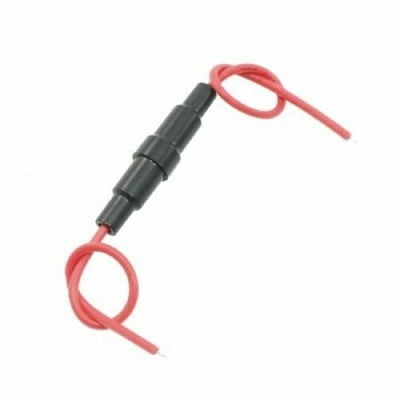
An in-line fuse is a safe way to wire an extra circuit.
Access Power from the Battery
The third option is to run a power wire to the car’s battery. In the wiring, splice an in-line fuse of the correct car fuse type and amperage.
- Cut the electrical wire that will extend to the battery.
- Put the in-line fuse between the cut wires. Either use the manufacturer’s butt plugs to connect the wires or solder them and cover with tape.
- This fuse, which can be a bladed fuse or old-school glass, will protect the circuit as if it was inside the fuse box.
- After splicing the in-line car fuse into the wiring, finish attaching to the battery.

